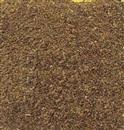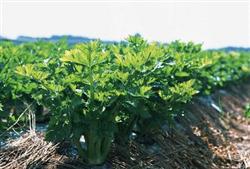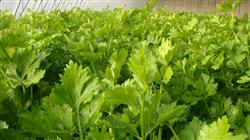As a general rule, how to keep the seed of celery

In recent years, many central authorities have cultivated some high-quality, common and inferior varieties of celery, and they also have a large percentage in sowing. As celery is a cross-pollinated crop, as a general rule, inferior species should do a good job in keeping seeds and preventing retrogression, so as to build a good place for farming or seed output, and choose good seeds and plants. It is strictly forbidden that no other kinds of celery can be sown within 4000 meters at most. The normal use of special topography such as lake islands, remote areas or tree lines as an artificial cut-off barrier to build a crop or a small area of breeding output. There are two seed collection methods of celery: large plant seed collection method and small plant seed collection method. The large plant seed collection method is also called the adult plant seed collection method or the old root seed collection method. Before the harvest of celery in summer, the field of replanting celery is being used to choose a high-quality single plant with the exemplary characteristics of this kind as a remaining plant to get rid of miscellaneous and inferior ones. When keeping a small number of seeds, the high-quality individual plants can also be transplanted to the remaining crops, and the choice can be stopped at the beginning of spring, that is, the early bolting, no hunger-resistant and disease-susceptible burrs can be eliminated. Pay attention to watering and fertilizing after the result. The flowering period of celery is long, and there is no difference in the infancy of the fruit. In order to ensure the quality of the fruit, it is best to harvest it in stages and batches. Normally, 75 kg of fruit can be consumed per mu of grain. When adopting the method of collecting seeds from large plants, it can stop the trade-off between the goods characteristics of burrs and hunger tolerance, and it can prevent the deterioration of species in a certain order. Because this method is more practical for the cracking and rejuvenation of inferior varieties of central celery. The small plant seed collection method harvests and harvests the fruit this year or cultivates the seedlings before winter, planting and leaving the crop in the next spring, and then let the bolting fruit be solid, and then collect the seeds. Although the profit of seed collection is small, this method can not stop the strict choice of species, and it is easy to cause species retrogression when it is used year after year, so it is mainly used to breed and consume species when high-quality new species have just begun to be implemented. The key point is that the small plant seed collection method dominates the proper harvest time. Normal is being broadcast live in the open field in late February. If the harvest is too late, the seedlings fail to go through the high temperature seed selection stage, and the seeds fail to bolt successfully; but if the harvest is too early, the seedlings go through the seed selection stage, the bolting results, the nutrient growth period is too short, and the accumulated nutrients are less. As a result, the fruit yield is low. When adopting the small plant seed collection method, the branching ability of the seed plant is not strong after bolting because of the small burr, because the fixed value density is denser than that of the larger plant, the general focal length of the hole is 20 cm and 50 cm, and 3 plants are planted in each hole. The rest of the cultivation and management skills and fruit harvest methods are contrary to the large plant seed collection method.
- Prev

Techniques of overwintering and seedling protection of spinach in North China
Western celery, also known as parsley, parsley, and American celery, is planted in the Shuyang area in autumn, with a general yield of 3000murmur4000 kg per mu and a yield of 5000 kg per mu. Now its autumn high-yield cultivation techniques are briefly described as follows: first, the selection of improved seeds and sowing selection of late bolting, strong stress resistance, not easy to soften, thick and hollow meat.
- Next

Softening cultivation technique of celery
Overwintering celery is mainly carried out in a monoclinic solar greenhouse with mulch, and the supply period is from New year to Spring Festival. Because of its good quality, it is welcomed by the market and its output value is high. its cultivation techniques are introduced as follows: first, non-tillering, fast growth, high yield and high yield should be selected for celery cultivation in solar greenhouse.
Related
- Where is it suitable to grow horseradish in China? it is expected to see the middle altitude horseradish in Alishan.
- How to prevent tomato virus disease reasonably? (Control methods included)
- Many people like to plant towel gourd on the balcony. What are the main points of this method and management?
- What crops can chili peppers be mixed with?
- Fertilization techniques and matters needing attention in Tomato
- What are the grafting techniques for peach seedlings in spring?
- Harm and control methods of root swelling disease of Chinese cabbage
- What are the pests of sweet potatoes? How to prevent and cure it?
- Symptoms, causes and Control methods of navel Rot in Tomato
- The cause of "Cucumber rotten bibcock" in Farmers' planting Cucumber and its Control Plan

